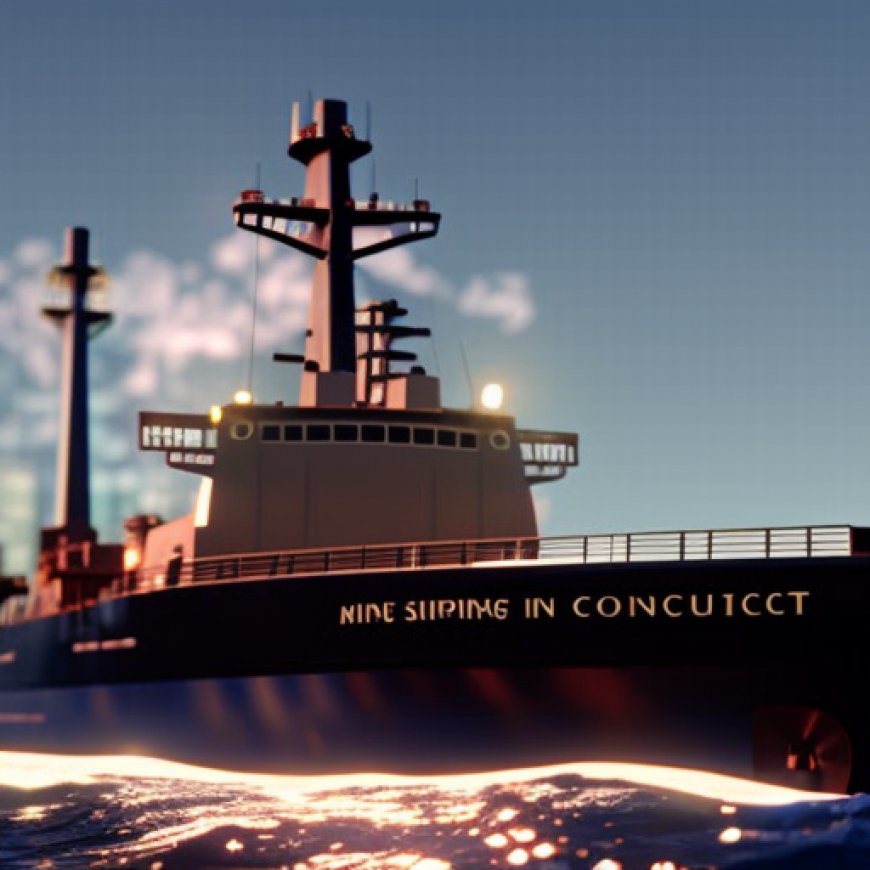GCMD, Eastern Pacific Shipping Conduct Marine Biofuel Blend Trial
GCMD, Eastern Pacific Shipping Conduct Marine Biofuel Blend Trial Environment + Energy Leader


The Global Centre for Maritime Decarbonization and Eastern Pacific Shipping Conduct Successful Biofuel Supply Chain Trial

The Global Centre for Maritime Decarbonization (GCMD) and Eastern Pacific Shipping have successfully implemented their third supply chain trial of a carbon-reducing biofuel blend to fuel a mid-sized gas carrier ship.
A biofuel blend was used to power the Kaupang, which hosts an LPG dual-fuel engine. The engine runs on about 200 metric tons of fuel, provided by GoodFuels, which is made from hydrotreated vegetable oil (HVO) and marine gas oil (MGO).
This marked the third supply chain trial after GCMD successfully traced two supply chains of biofuel blends through Singapore. In this most recent trial, an element-based tracer was used to assure the origination and quantity of the biofuel blend. The trial also uniquely implemented in-line tracer dosing with HVO and blended with MGO while onboard the bunker vessel.
“The experiences from this trial will strengthen the development of our framework to provide emissions abatement assurance when it comes to paying a premium for green fuels over fossil fuels,” said GCMD Chief Technology Officer Sanjay Kuttan. “Through this pilot, we demonstrated that different tracing techniques can help ensure authenticity and quantity of sustainable biofuels in the supply chain. And using a biofuel blend with LPG can be a feasible pathway for ships to meet the recently revised IMO indicative decarbonization checkpoint for 2030.”
Defining Sustainable Biofuel Standards
Interim guidelines have been released in order to clarify what biofuels can be considered sustainable, and they will come into effect starting in October. The guidelines include a 65% emissions reduction minimum when compared to conventional fuels.
The HVO used in the trial was produced from 100% waste and residues, which translates to an 83% reduction in emissions compared to using fossil-based fuel.
“By applying our groundbreaking physical fuel tracing technology in practice in this pilot, we are jointly taking another significant stride towards a more transparent bunker industry that is geared towards decarbonization in a scalable way,” said Commercial Director of GoodFuels Johannes Schürmann. “Transparency is becoming even more crucial as we are now starting to bring the new generation of Sustainable Marine Fuels to market. The ability to access reliable technical insights and sustainability guarantees in every step of the supply chain is absolutely essential.”
In the upcoming months, two more supply chains of the biofuels assurance framework pilot will be trialed. A public report of the trials’ findings will be released in early 2024.
SDGs, Targets, and Indicators
-
SDG 13: Climate Action
- Target 13.2: Integrate climate change measures into national policies, strategies, and planning.
- Indicator: The use of biofuel blends to reduce carbon emissions in the maritime industry.
-
SDG 7: Affordable and Clean Energy
- Target 7.2: Increase substantially the share of renewable energy in the global energy mix.
- Indicator: The use of biofuels made from hydrotreated vegetable oil (HVO) and marine gas oil (MGO) to power a gas carrier ship.
-
SDG 9: Industry, Innovation, and Infrastructure
- Target 9.4: Upgrade infrastructure and retrofit industries to make them sustainable.
- Indicator: The successful implementation of biofuel supply chain trials using different tracing techniques to ensure authenticity and quantity of sustainable biofuels.
Table: SDGs, Targets, and Indicators
| SDGs | Targets | Indicators |
|---|---|---|
| SDG 13: Climate Action | Target 13.2: Integrate climate change measures into national policies, strategies, and planning. | The use of biofuel blends to reduce carbon emissions in the maritime industry. |
| SDG 7: Affordable and Clean Energy | Target 7.2: Increase substantially the share of renewable energy in the global energy mix. | The use of biofuels made from hydrotreated vegetable oil (HVO) and marine gas oil (MGO) to power a gas carrier ship. |
| SDG 9: Industry, Innovation, and Infrastructure | Target 9.4: Upgrade infrastructure and retrofit industries to make them sustainable. | The successful implementation of biofuel supply chain trials using different tracing techniques to ensure authenticity and quantity of sustainable biofuels. |
Behold! This splendid article springs forth from the wellspring of knowledge, shaped by a wondrous proprietary AI technology that delved into a vast ocean of data, illuminating the path towards the Sustainable Development Goals. Remember that all rights are reserved by SDG Investors LLC, empowering us to champion progress together.
Source: environmentalleader.com

Join us, as fellow seekers of change, on a transformative journey at https://sdgtalks.ai/welcome, where you can become a member and actively contribute to shaping a brighter future.







